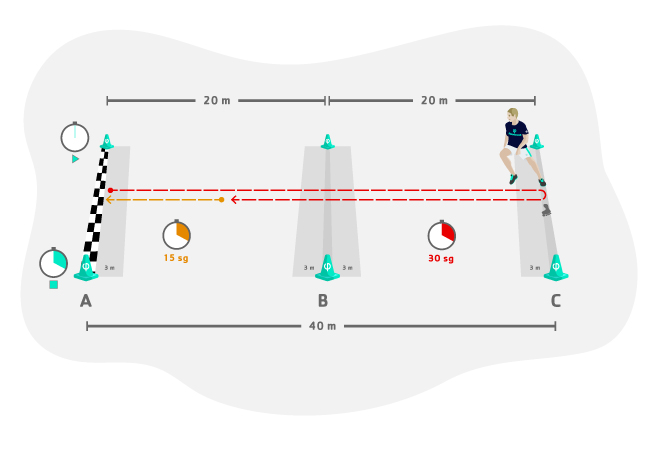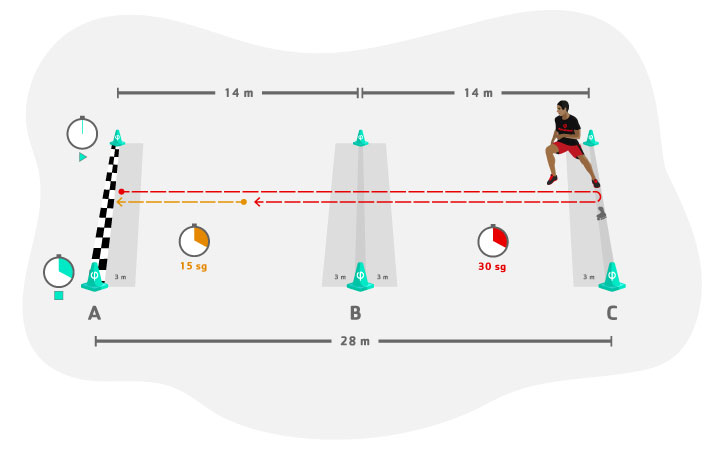

30-15 Intermittent fitness test (30-15 IFT)
The 30-15 Intermittent Fitness Test (30-15 IFT) was designed by Dr. Martin Buchheit in France in the year 2000. This test consists of running back and forth for 30 seconds separated by passive recovery walking periods of 15 seconds, hence the name 30-15 test. The first run starts at a slow pace (8 km/h) and progressively increases 0.5 km/h in each period (out-and-back run), until the subject completes the test. The speed achieved in the last period reached is taken as the VIFT (Velocity of the Intermittent Fitness Test) and can be used as the test final result and/or to establish work intensities for training.
This test has 2 versions:
-
- Versión 1 – This is the original version with 40-meter round-trip shuttles and is used mainly in soccer (Figure A).
- Versión 2 – Modified version adapted to basketball with 28-meter round-trip shuttles (Figure B).
- Required Material: A flat non-slip surface, 6 cones to mark the circuit course, a measuring tape and a stopwatch. Additionally, an audio equipment to play back the audio of the test protocol is needed. If the subjects’ heart rate (HR) must be measured, a heart rate monitor will be needed.
- Procedure: At the first beep of the test protocol, the subject should run from the starting cone/line (A) to cones B and C (see figures). When the next beep sounds, he/she should be close to cone B (14 or 20 meters, depending on the test version) and at the next beep he/she should be close to the 3-meter zone of cone C (28 or 40 meters), if possible exactly on the line of cone C. Once the subject arrives at cone C, he/she should turn and come back towards cone A. On the next beep, the subject will have to be close to line/cone B and so on. This must be done until the end of the 30-second running period (indicated by a different sound). After each shuttle there is a 15-second passive recovery period, in which the subject must walk slowly in the same direction of the run until reaching the next nearest cone (A, B or C). Walk backwards is strictly forbidden. The audio signals provide the participant with information about where the next stage (A, B or C) should begin. If the subject is exactly on the line, he/she should stay there and wait until the next period begins.
- Assessment: The number of back and forth shuttles that the subject is able to cover in a single attempt is measured.
- Remarks: For the modified 28-meter version (Figure B), the control zones at the ends and in the middle can be reduced to 2 meters.
Take this test and 139 more in our App